You can paint anything in this art game, so I painted 100 pictures of trees
Passpartout: The Starving Artist is like Diner Dash, but for art—paint quickly, and keep customers happy.
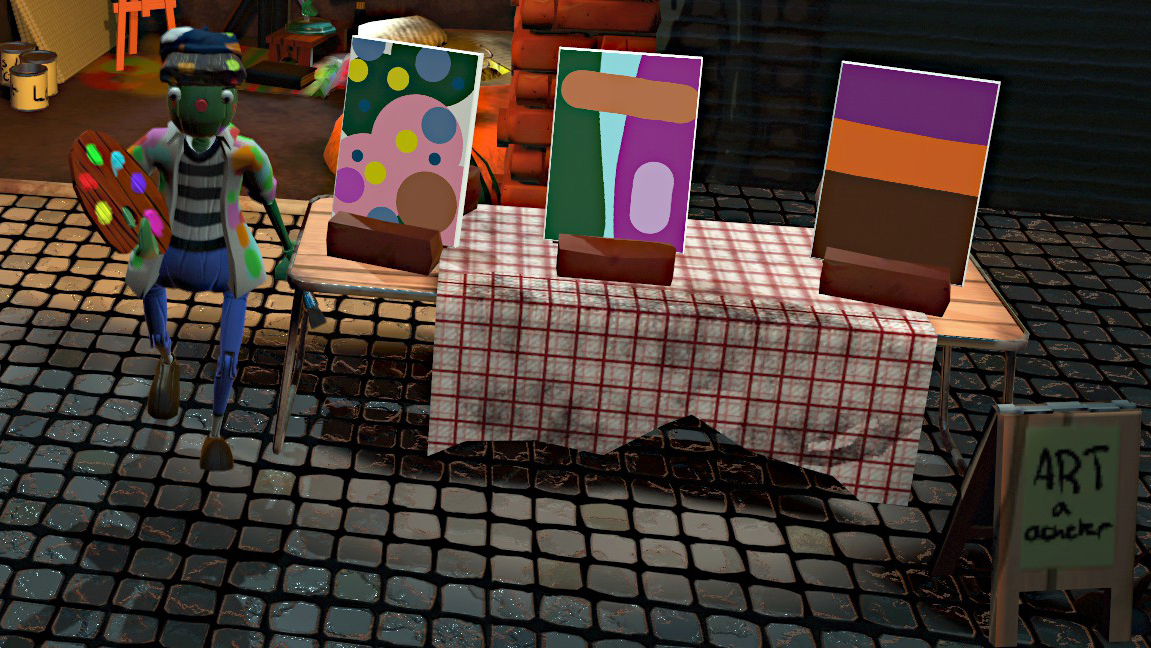
I've been applying my talents to Passpartout: The Starving Artist, a painting game where you create works of art and sell them to discerning customers. For the record, there should be quotation marks in the first sentence—big, heavy, sarcastic ones—around the words talents, painting, works of art, and discerning customers. To be completely accurate, I am drawing garbage and selling it to suckers.
It's fun though! You begin with an easel and a blank canvas, and using what is essentially a stripped-down version of MS Paint, you draw a little picture on the canvas, then put it on your sale table. One by one, customers will walk by and either purchase the painting or tell you, with the kind of blunt honesty that feels incredibly cruel, why they're not buying it.
In addition to painting, you need to be aware of the passage of time: you have bills coming in that take away from your bank account, meaning you need to crank out as many art rectangles as you can to keep ahead of your finances. Also, when someone wants to buy a painting, you have to click the sell button quickly: the longer they have to wait, the less they'll pay. It's like Diner Dash, only for art.
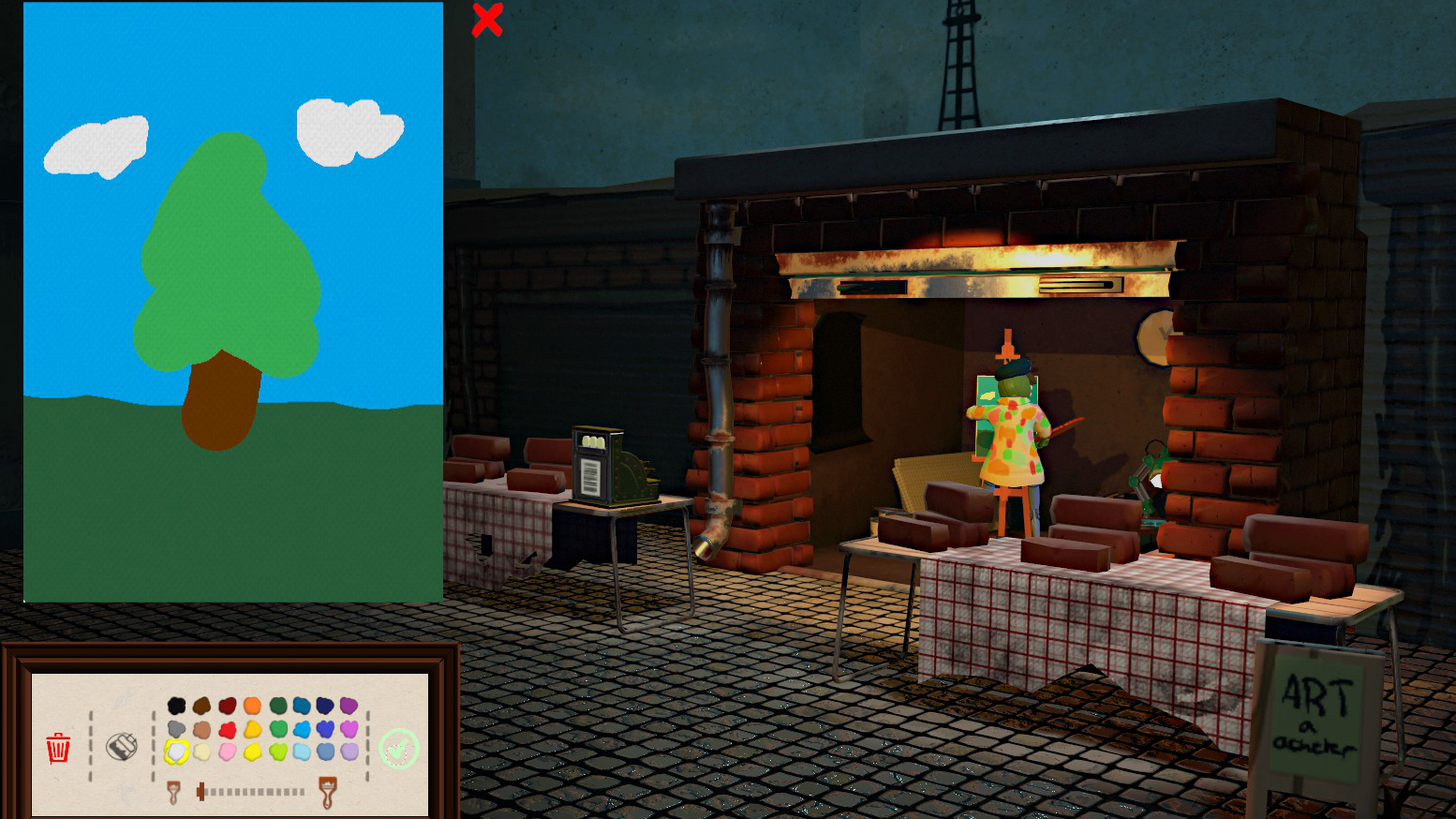
It's not exactly like Diner Dash—the customers don't order up the painting they want. However, as the same handful of customers keep returning, and they aren't shy about telling you what they dislike, you can get a gradual feel for what they do like. Which brings us to Benjamin. My hero. He's a jovial little man wearing a backpack full of baguettes, and he likes pictures of trees. Most importantly, he likes my pictures of trees, which are terrible.
A tree is the first thing I paint in Passpartout, because I am not remotely artistic or imaginative, and it's easy. Green grass on the bottom, blue sky up top, a brown line for the tree and a smush of green for leaves. I stick it on the table, and Benjamin, the saint, is thrilled to purchase it from me. I paint another picture, changing things up a little—this one has two trees!—and he strolls over and buys that one, too.
I become a tree-painting machine. The machine is terribly broken, mind you: my tree-paintings are all incredibly shitty, and in fact the word 'shitty' is in the title of most of my works of bad tree-art. But I want to make Benjamin happy, and so at the very least I attempt to keep my tree paintings interesting. Below, please peruse my tree gallery, and note that all of these have already been sold, most of them to Benjamin.
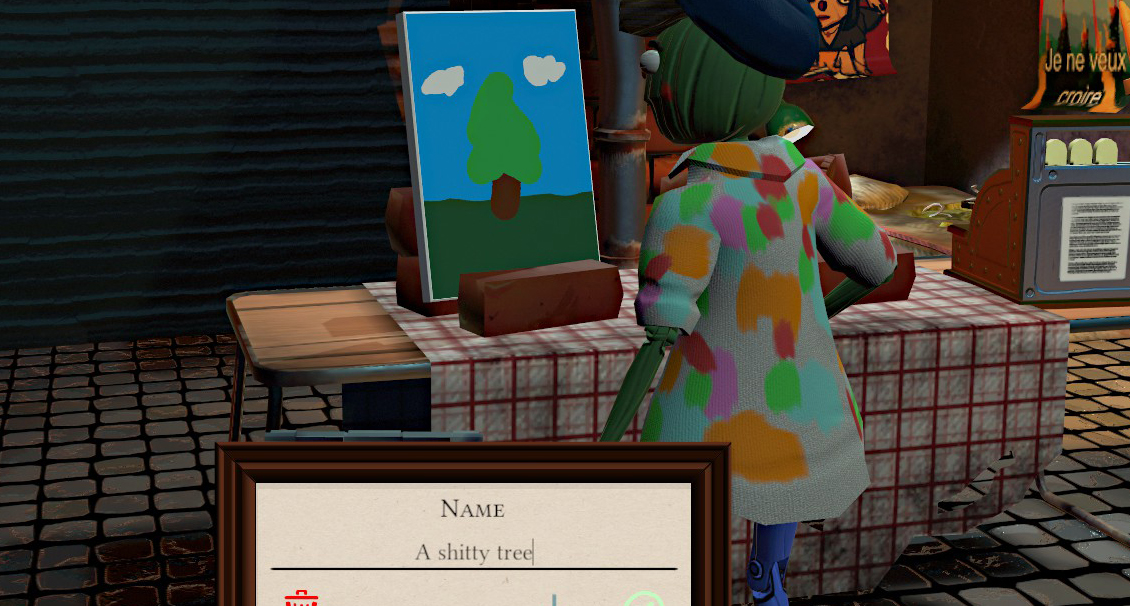
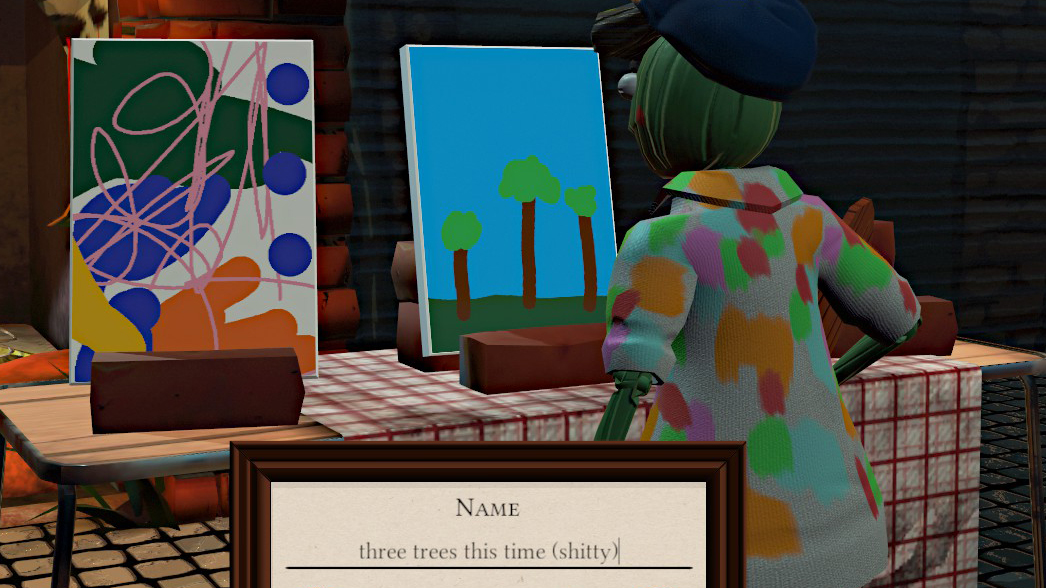
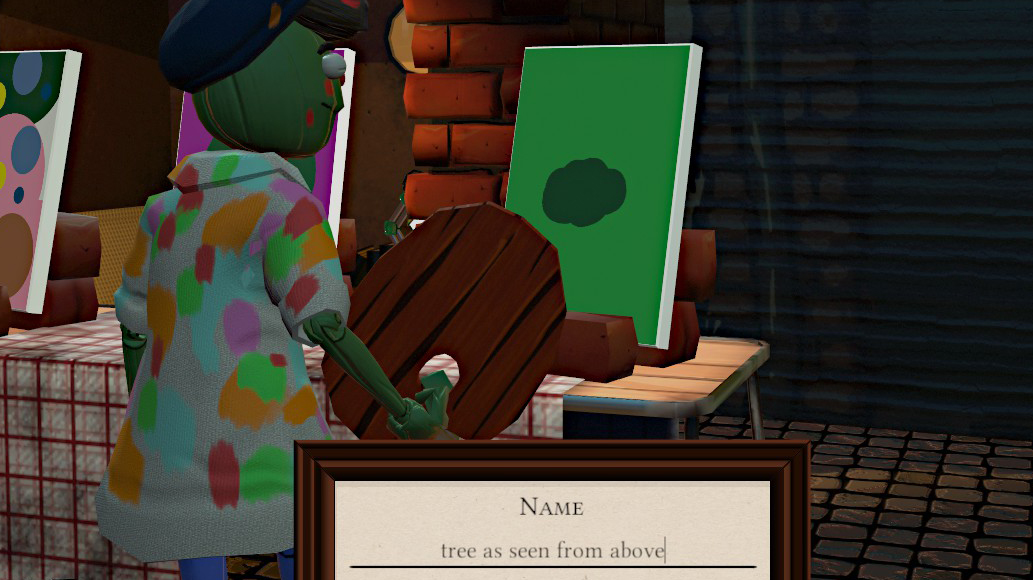
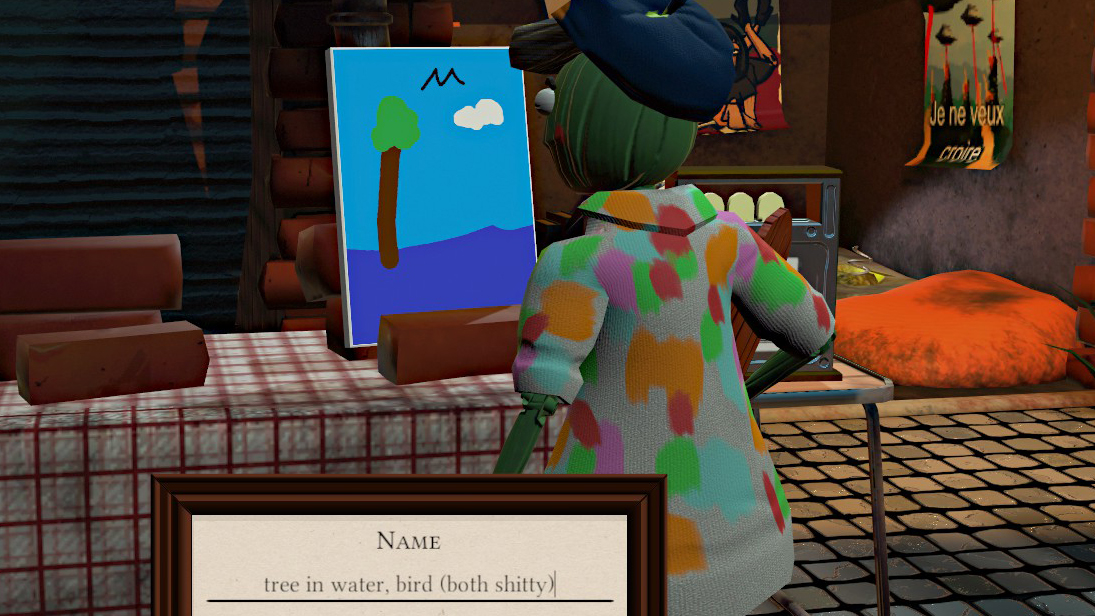
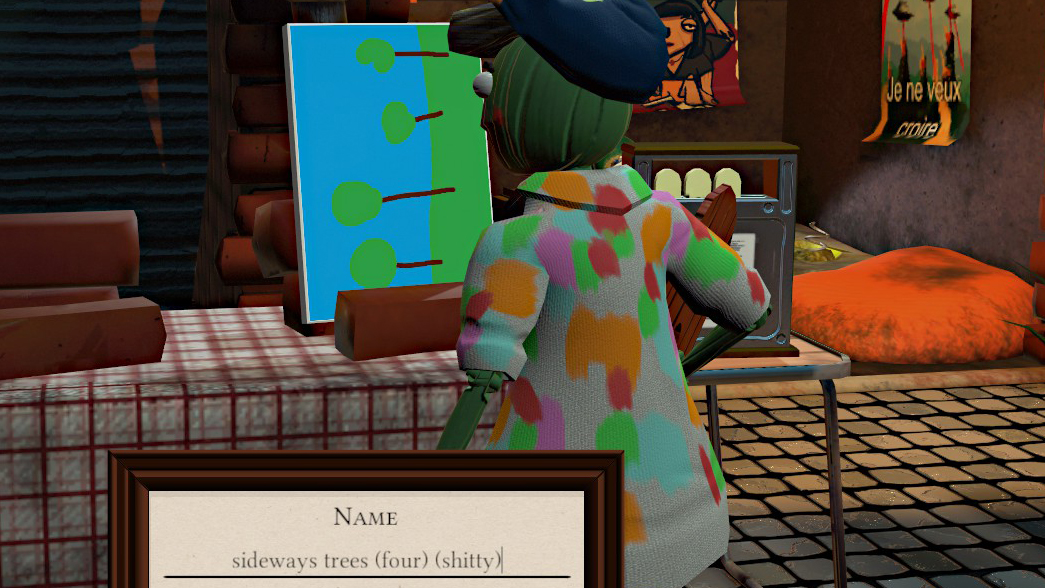
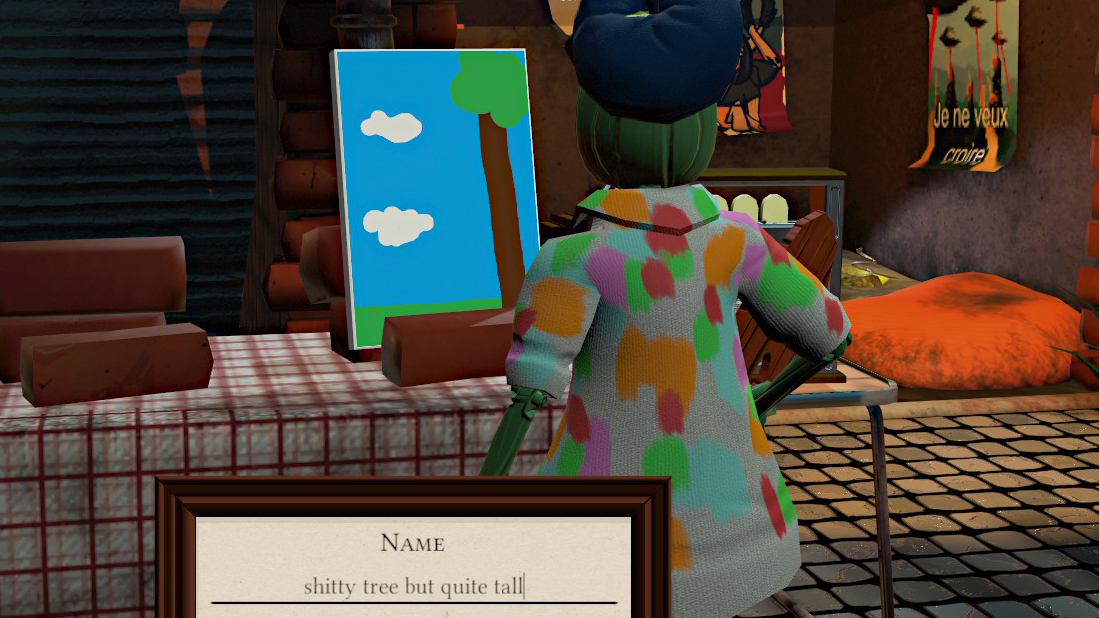
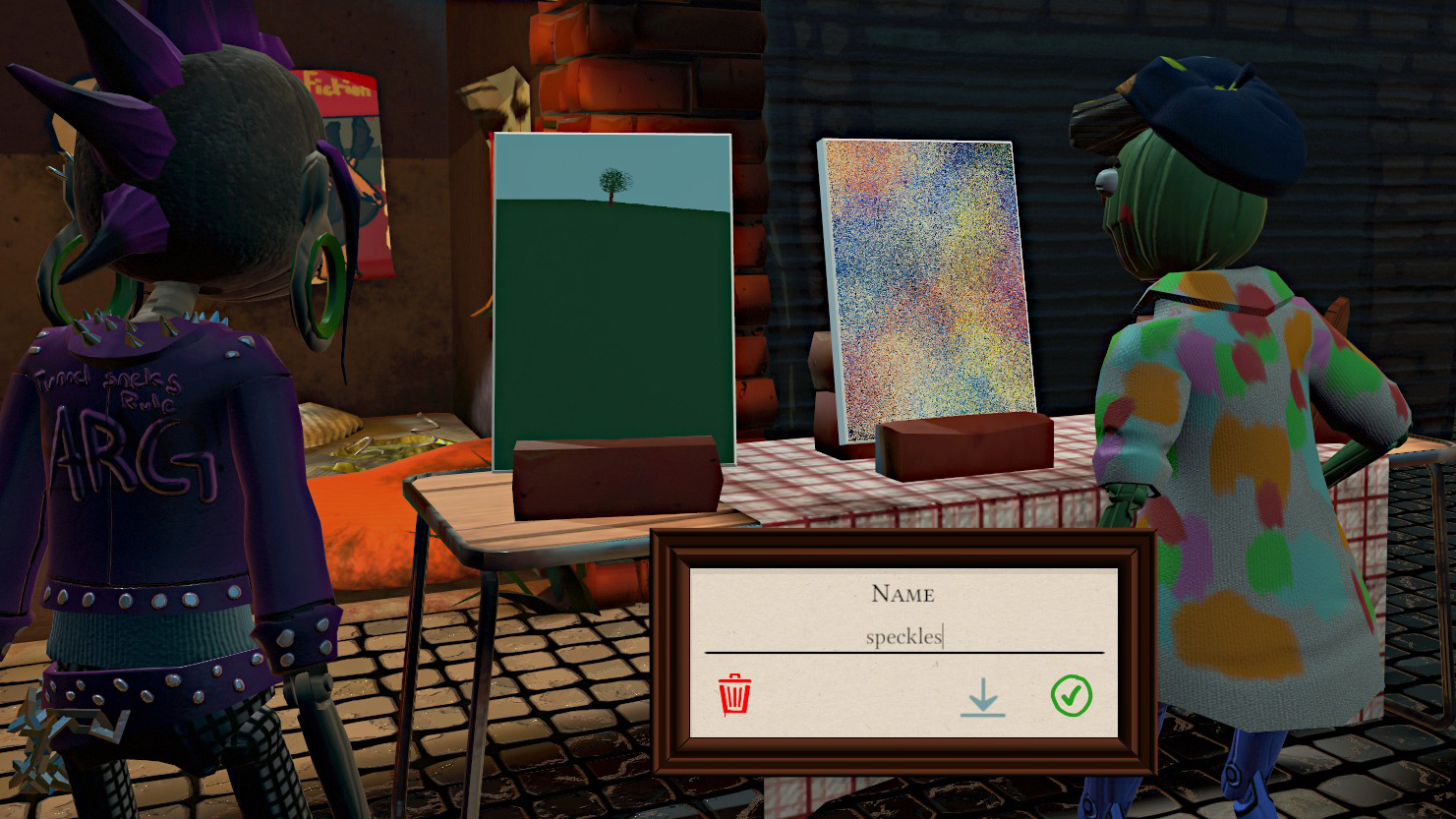
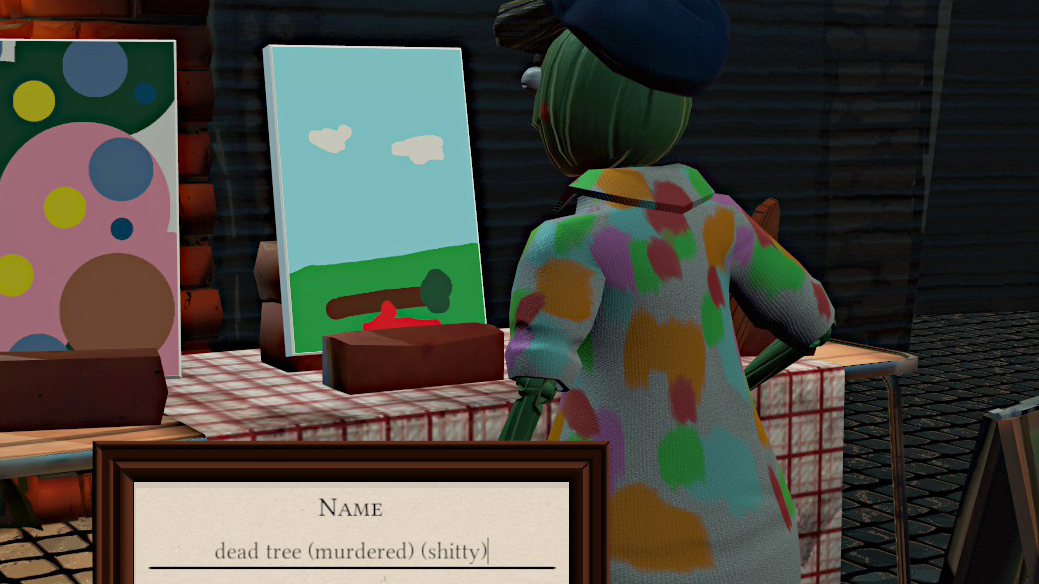
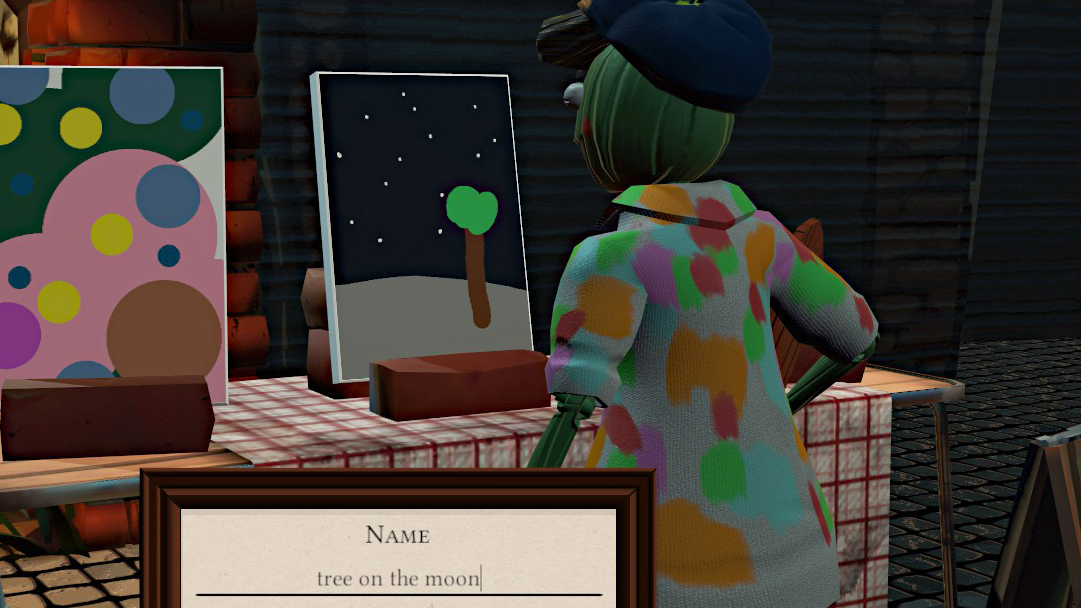
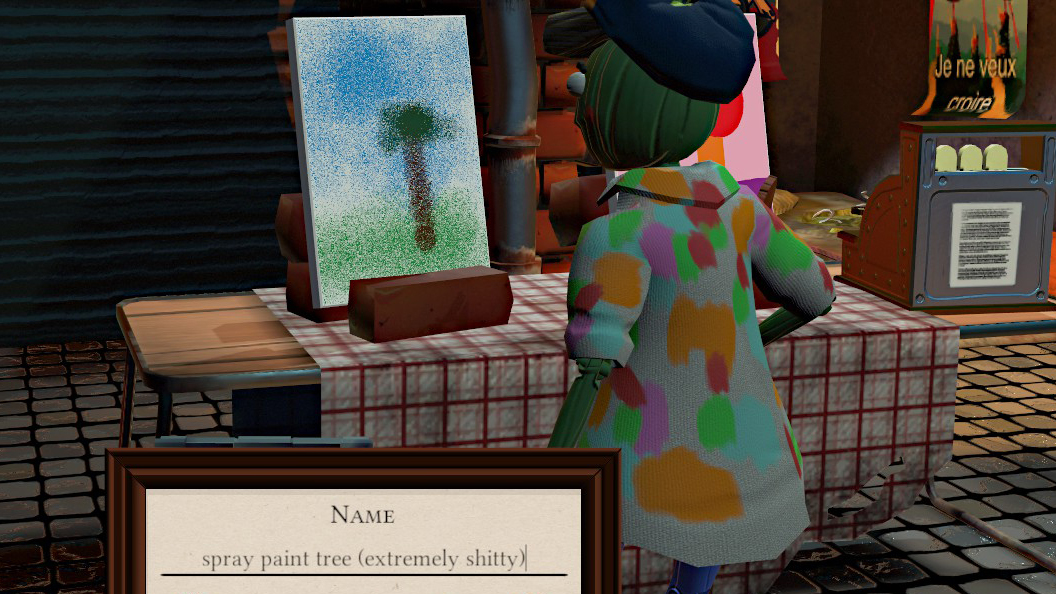
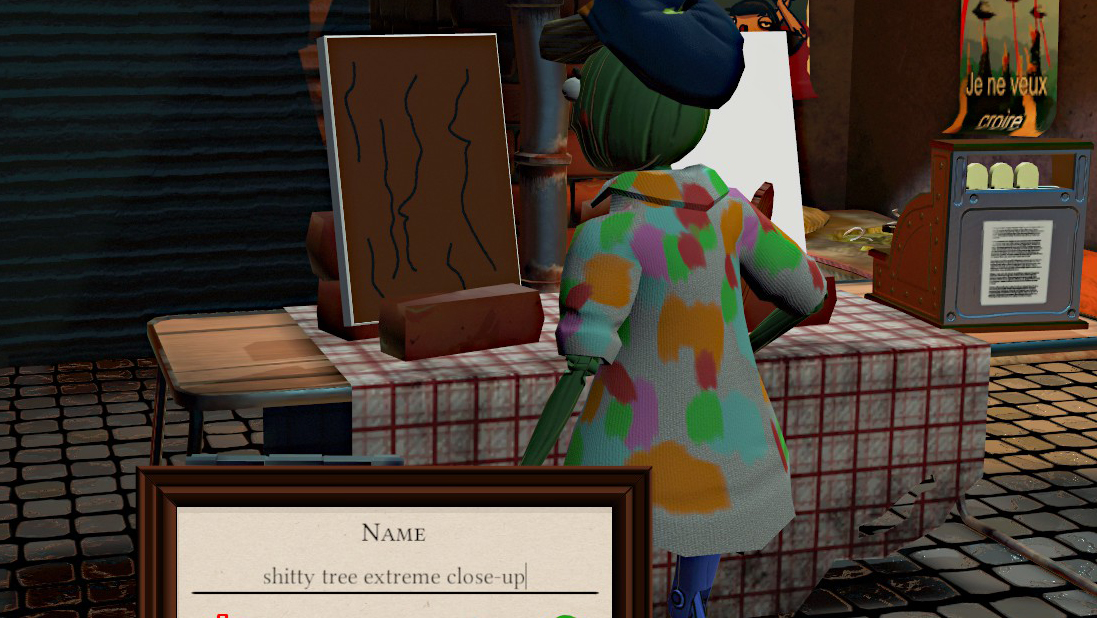
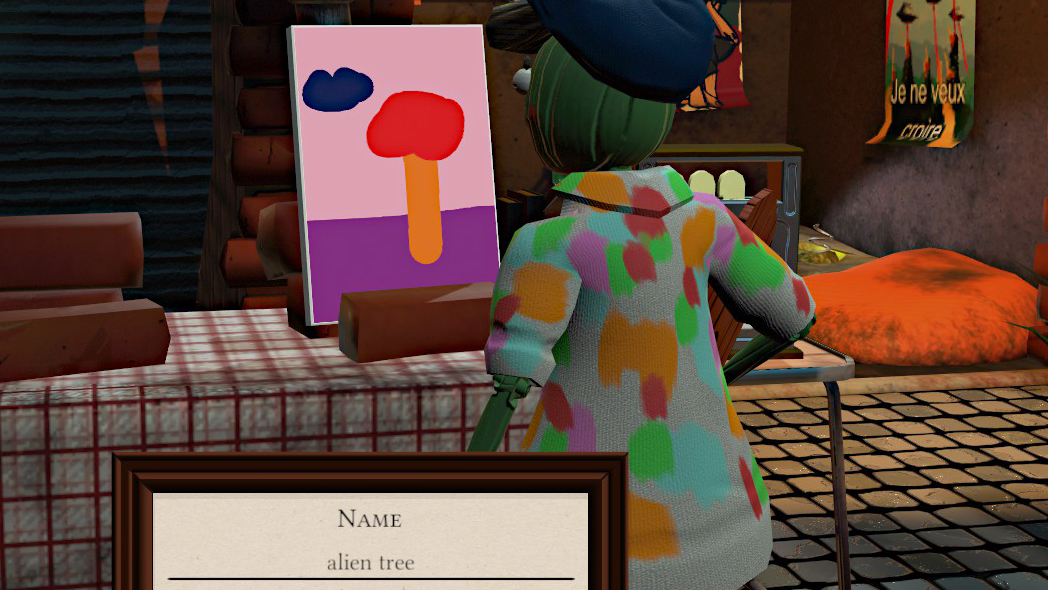
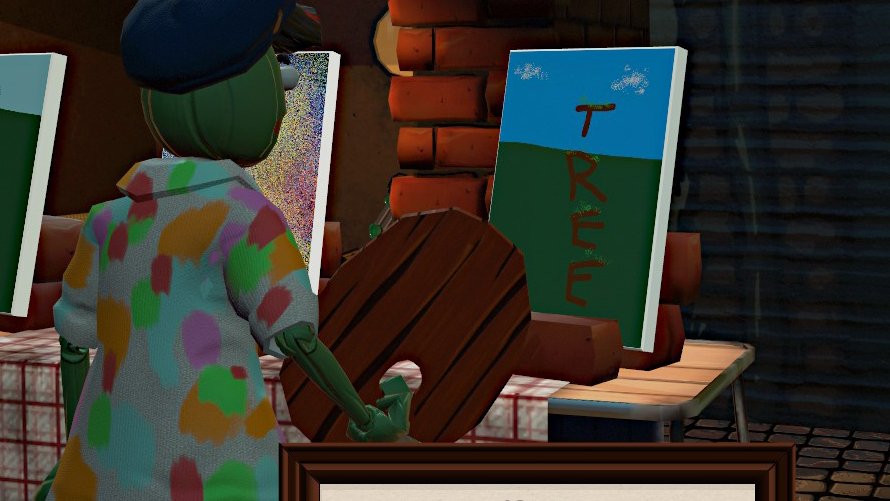
When I'm not painting trees, I'm desperately trying to game the art world, to produce paintings that will sell with the least amount of effort on my part. Customers seem to appreciate a painting with more than two colors, and don't really like it when there are too many colors. I produce a few tri-color paintings—that's it, just three quick stripes of different colors—but they take a long time to move because most customers don't like them that much. It's a shame: they're way easier to produce than trees are.
The biggest gaming news, reviews and hardware deals
Keep up to date with the most important stories and the best deals, as picked by the PC Gamer team.
I try a completely blank canvas, but my customers are too smart to fall for that. Same with circles: until a little while later when I unlock a spraypaint tool, the only brush shape I have is round. Any painting I produce that is just a bunch of circles—in other words, a canvas I just jabbed with the brush a few times—is widely sneered at.
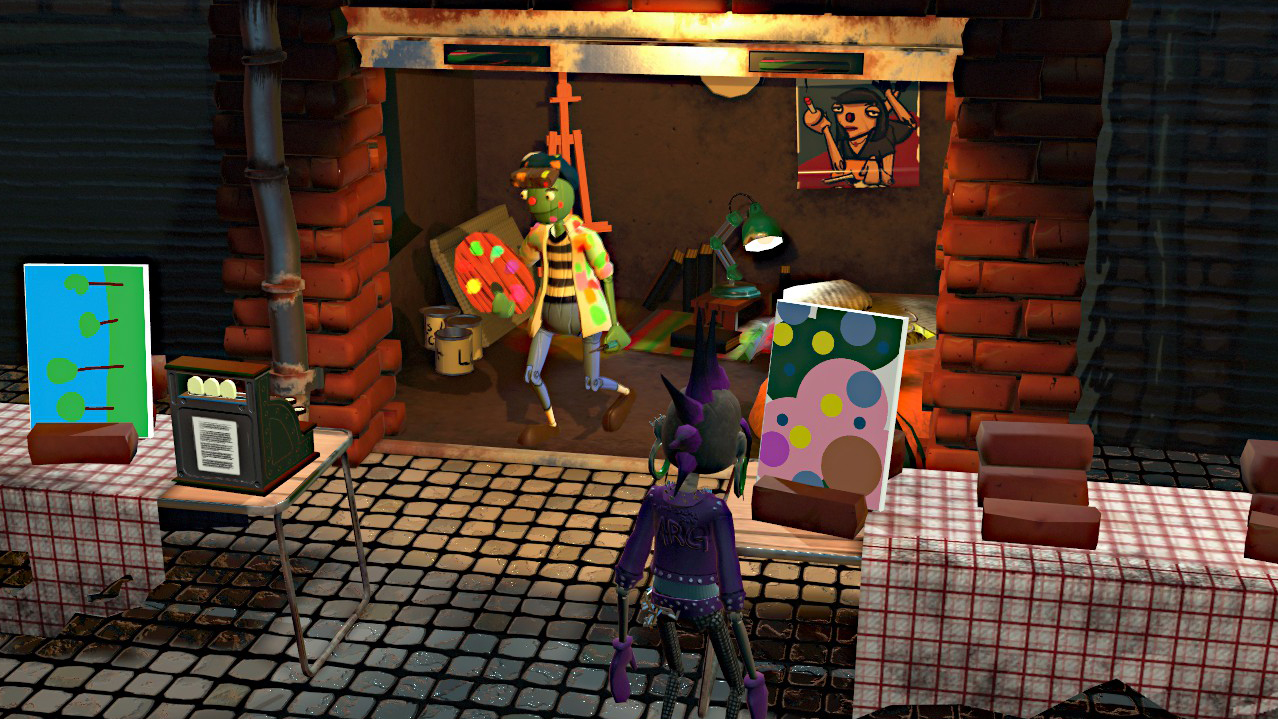
Thing is, they'll still buy crap, provided you work on the crap for more than a few seconds. I find that as long as I put some effort in, my paintings will usually sell quickly. A face I paint, a very basic one (it's all I'm capable of) sells promptly. A Jackson Pollock ripoff (a whole bunch of squiggles) also moves. I even create true art, with a painting of a $1 bill that I title "GREED!!!!!! ART STATEMENT!"
It's pretty deep. I do, I'm ashamed to admit, compromise my bold protest by adding a little tiny tree above the dollar bill—just in case no one can handle my truth, maybe Benjamin will still buy it.
(He does, adding "Tres bien!")
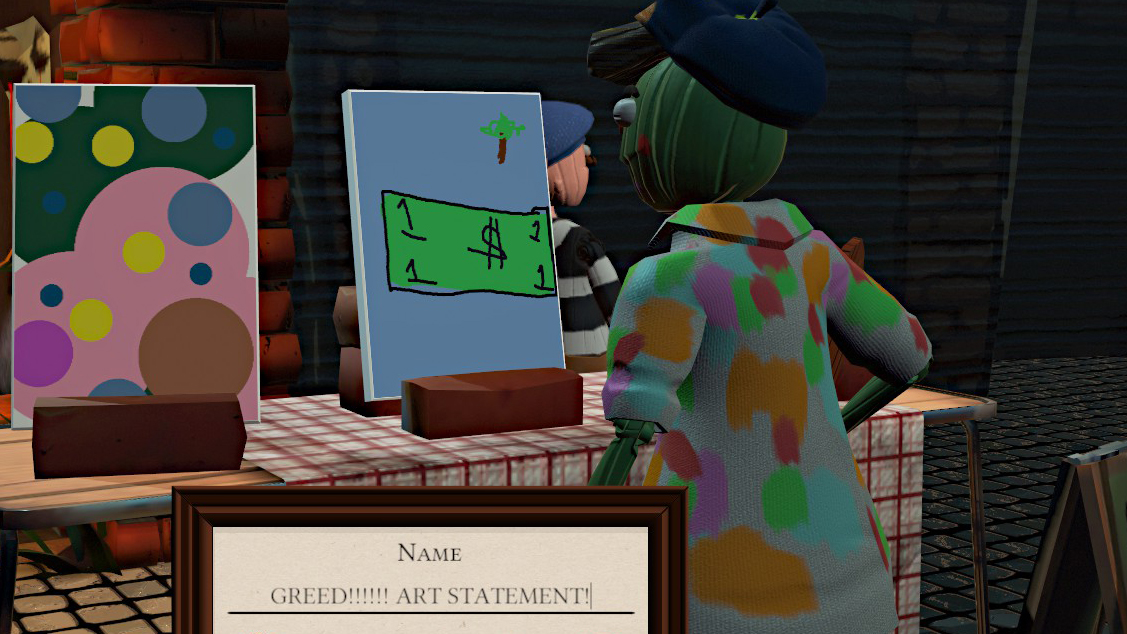
As enjoyable as it is to slap together horrible little paintings and sell them to rude French people, I find Passpartout a bit stressful. Dashing around, quickly slapping colors on canvas, running them out to the sales floor, running back to create another, all the while being insulted by customers who don't like the color pink or don't like circles or don't appreciate trees as much as Benjamin does or simply can't handle the shocking political statement of a crude dollar bill... it takes a toll. Also, all the mouse-drawing is kinda hard on the wrist after a while.
The teaser on Passpartout's website shows things like galleries and art shows, which I haven't gotten to yet: even after what feels like a million paintings, I've still only unlocked the spraypaint tool. I'm slowly making money, though, and I'll keep at it. As long as Benjamin doesn't get sick of trees, or wind up crushed beneath the huge pile of tree paintings he's bought, I might, someday, take the art world by storm.

Chris started playing PC games in the 1980s, started writing about them in the early 2000s, and (finally) started getting paid to write about them in the late 2000s. Following a few years as a regular freelancer, PC Gamer hired him in 2014, probably so he'd stop emailing them asking for more work. Chris has a love-hate relationship with survival games and an unhealthy fascination with the inner lives of NPCs. He's also a fan of offbeat simulation games, mods, and ignoring storylines in RPGs so he can make up his own.

